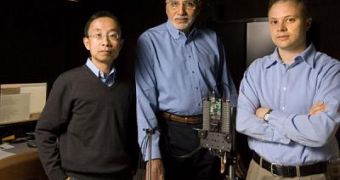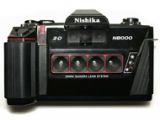Film fans might remember cameras with two, three and even four lenses (like the Nishika N8000) that gave photographers the possibility to create the so-called 3-D images, and while software is also used with today's digital cameras to create such images, the latest invention from a team of Standford researchers might revolutionize this field.
According to a recent press release, Philip Wong, Abbas El Gamal and Keith Fife are developing a digital camera that sees the world through thousands of tiny lenses, providing an electronic "depth map".
Led by electrical engineering Professor Abbas El Gamal, the team has taken the concept to a whole new level by developing something equivalent to having a camera with 12,616 lenses. Not quite your everyday point and shoot device.
Using their multi-aperture image sensor, the researchers have shrunk the pixels on the sensor down to 0.7 microns, several times smaller than pixels in standard digital cameras. They've grouped the pixels in arrays of 256 pixels each, and they're preparing to place a tiny lens atop each array.
"It's like having a lot of cameras on a single chip," said Keith Fife, a graduate student working with El Gamal.
As the researchers point out, an obvious potential use of the technology is facial recognition for security purposes. By pointing the "camera" at someone's face, one immediately achieves two goals: taking the photo and precisely recording the distances to the subject's eyes, nose, ears, chin, etc.
According to the press release, the technology is expected to produce a photo in which almost everything, near or far, is in focus. By using special software (it still needs the software), it would be possible to selectively defocus parts of the photo to create unique effects.
But there are a number of other possibilities for a depth-information camera: biological imaging, 3-D printing, creation of 3-D objects or people to inhabit virtual worlds, or 3-D modeling of buildings.
However, the prototype is not ready yet and the researchers are now working on how to fabricate the micro-optics onto a camera chip.

 14 DAY TRIAL //
14 DAY TRIAL // 
